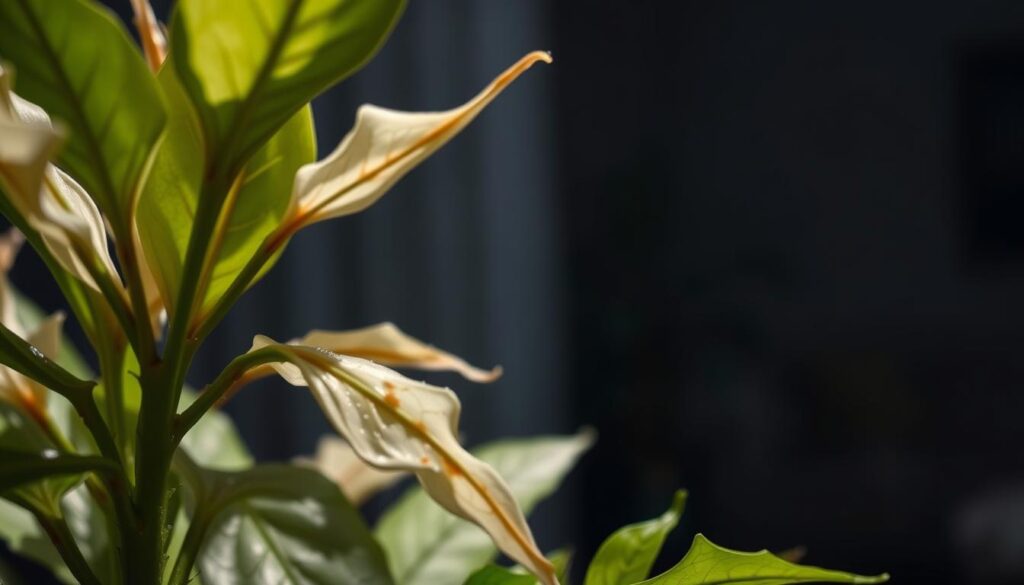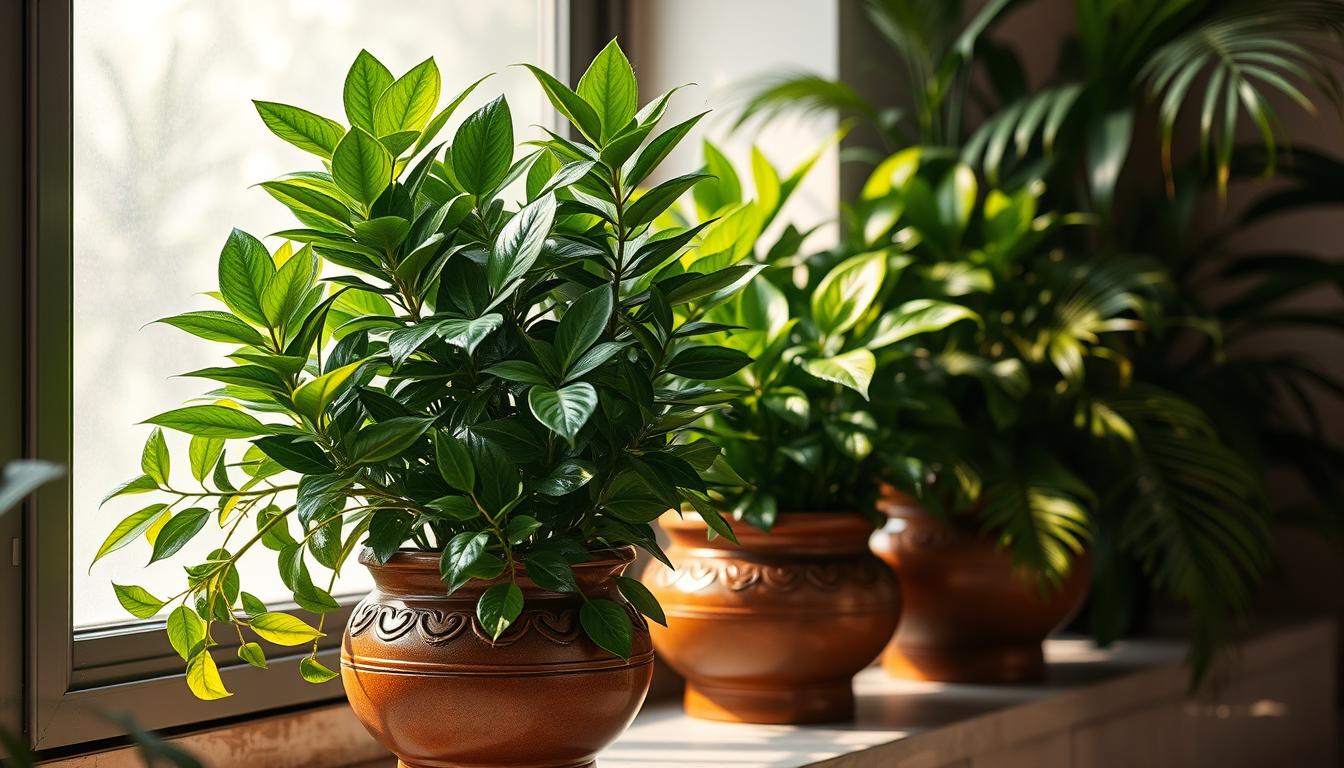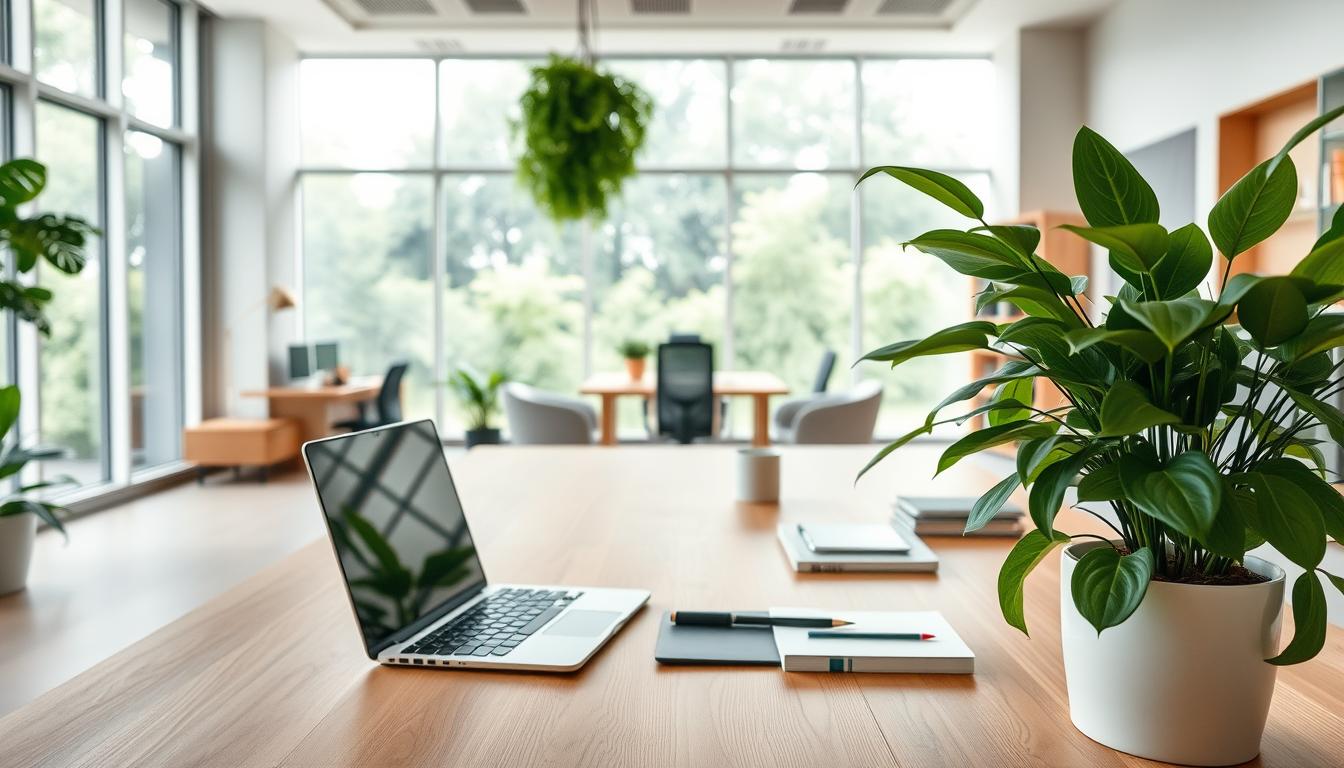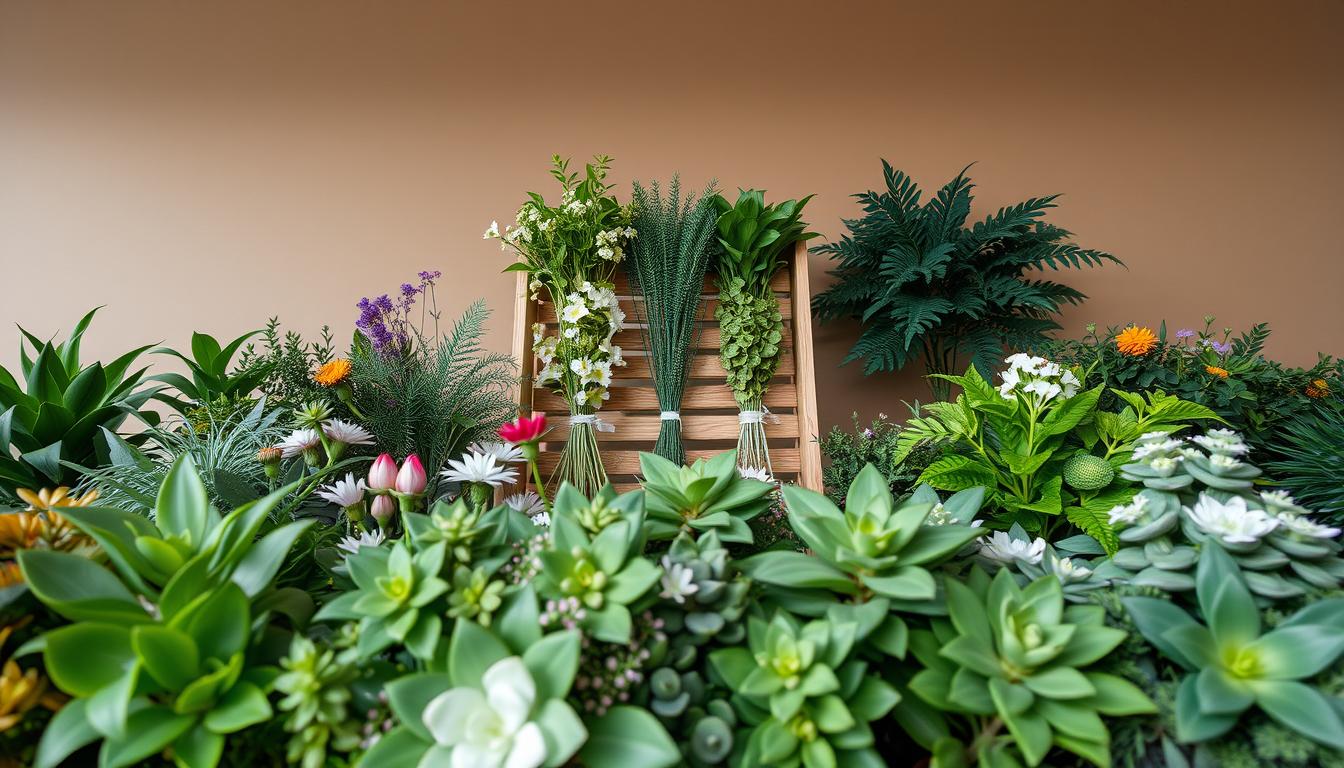Artificial foliage makes any space look better by adding a nature vibe without needing much care. But, it’s important to protect these decorations from moisture to keep them looking great. Moisture can cause the colors to fade, cracks to appear, and even damage their structure. To avoid this, choose UV-treated plants and follow top care tips. We’ll talk about the dangers of moisture and how to protect your artificial plants.
Understanding Artificial Foliage and Its Vulnerabilities
Artificial foliage is made from materials like plastic, polyester, and silk. Each material has weaknesses that can impact the plant’s look and life. For instance, sunlight can fade the colors, making them dull.
Too much moisture can also harm these synthetic plants. Other common problems include brittleness, causing leaves to break easily. Over time, exposure to tough conditions can weaken the plant’s structure. By knowing these issues, homeowners can choose and care for artificial foliage better.

Why Moisture Damage is a Concern for Artificial Plants
Moisture damage is a big deal for artificial plants. It can cause colors to fade and change, ruining their look. This makes them less attractive and can affect their use.
When water gets into porous parts of these plants, it can lead to mold or rot. This can make the plants less strong and durable. It’s important for people to know about these risks to keep their artificial plants looking good. Taking steps to prevent moisture damage is key.
Protecting Artificial Foliage from Moisture Damage
To keep artificial foliage safe from moisture, it’s important to pick the right materials and treatments. Using UV treatment boosts durability. It helps synthetic plants stay colorful and resist sun damage.
The Role of UV Treatment in Durability
UV treatment is key to making foliage last longer. It helps artificial plants keep their look, avoiding fading and cracking. This protective layer makes the plants more durable, especially for outside use.
Choosing the right materials is vital for keeping artificial foliage undamaged. High-quality plastics that repel water help prevent deterioration. Paired with UV treatment, these materials help synthetic plants stay beautiful and strong for a long time.
Identifying Signs of Moisture Damage
Homeowners should look out for signs of moisture damage in fake plants. Spotting these signs early can stop more problems. Watch for cracking and color fading. These often show there’s a deeper issue. It’s good to check your plants’ structure often to understand their condition.
Cracking and Fading of Colors
Cracking can happen when fake plants face harsh weather and too much moisture. This not only makes plants look bad but can also weaken them. Color fading shows the material is wearing out because of UV rays and moisture. It’s important to fix these problems quickly to keep your plants looking good for a long time.
Structural Integrity Compromise
Keeping an eye on the structure of fake plants is key. Moisture can make the plants’ frame break down over time. This can make them sag or even fall apart. Checking your plants often helps find these problems early. This way, you can stop more damage and keep your decorations in good shape.
Maintenance Tips for Artificial Foliage
Taking care of artificial foliage is key to keep them looking great. By following a few upkeep tips, you can make sure they stay beautiful and mold-free. This care also makes them last longer.
Regular Cleaning to Prevent Mold Growth
Cleaning your artificial plants often is crucial. Dust and dirt can make mold grow, which causes the plants to look bad and smell weird. Here are steps to keep them clean:
- Use a soft cloth or a feather duster to gently wipe the leaves and stems.
- For deeper cleaning, rinse the foliage with lukewarm water, ensuring it dries completely afterward.
- Incorporate a gentle soap solution occasionally for tougher stains, followed by a thorough rinse.
Seasonal Inspections for Damage
Checking your artificial plants from time to time is smart. It helps you find any damage early on. When inspecting, look out for:
- Cracks or fading in colors that could indicate exposure to sunlight.
- Structural integrity to ensure the foliage remains securely in place.
- Signs of mold growth, particularly in damp areas or during high humidity seasons.
Regular checks and cleans help prevent mold. They also keep your artificial plants in top shape.
Best Practices for Displaying Artificial Plants Outdoors
When you put artificial plants outside, it’s good to know how to keep them looking nice for a long time. Using UV-treated artificial plants helps stop them from fading in the sun. This keeps the colors bright and lively.
Putting these plants where there’s some shade can also protect them. Wind and rain can damage artificial plants. So, placing them under cover or close to buildings helps them last longer.
Choosing the right pots is important too. Use strong containers that can handle the weather. This keeps your plants steady and makes your outdoor space look great.
How you place your plants matters as well. Setting them up in a smart way not only looks good but also keeps them safe. Make sure there’s enough room for air to move around, which helps the plants stay beautiful.
Indoor Placement Strategies to Minimize Moisture Exposure
Choosing where to place indoor plants carefully can greatly lessen moisture exposure for fake plants. Picking spots away from areas high in humidity, like kitchens or bathrooms, helps them last longer.
Also, moving these plants around keeps their colors bright and their structure intact. This easy step prolongs their beauty and prevents damage.
Rotation Techniques to Even Out Exposure
Rotating fake plants indoors is key to avoiding uneven wear. Shifting them around periodically means each side gets equal light, which reduces color fading.
This approach helps keep the plants looking good and durable. It allows them to experience different light without harm from too much exposure.
Storage Solutions for Artificial Foliage During Off-Season
Storing your artificial plants right is key to keeping them beautiful. When it’s not their season, the right storage keeps them safe. Look for containers that are strong and keep out moisture. This is important for keeping your decorative plants looking good. It’s also crucial to clean them well before storage. This stops any moisture from causing damage.
Choosing the Right Storage Containers
Choosing the correct containers is vital for your artificial plants. Think about these options:
- Plastic bins with tight-fitting lids to keep out moisture and dust.
- Fabric storage bags that allow for air circulation while protecting against humidity.
- Clear containers for easy visibility, making it simple to find specific items when needed.
These storage methods make organizing easy and keep your plants safe off-season. This way, you can put them back up easily when the time comes.
Conclusion
To keep your artificial plants looking good, you need to protect them from water damage. Choosing materials that resist moisture, using UV treatments, and regular upkeep are key. These steps help keep your fake plants bright and your home looking great.
Also, the way you show your artificial plants and how you store them matters a lot. Make sure to place and keep them in a way that avoids water damage. This care keeps your decorations looking amazing for a long time. Following these tips will help make your home both lovely and lasting.
In the end, taking care of artificial plants this way helps them add beauty to your home without the worry of moisture harm. With careful attention and the right practices, your fake foliage can be a lasting part of your decor.



